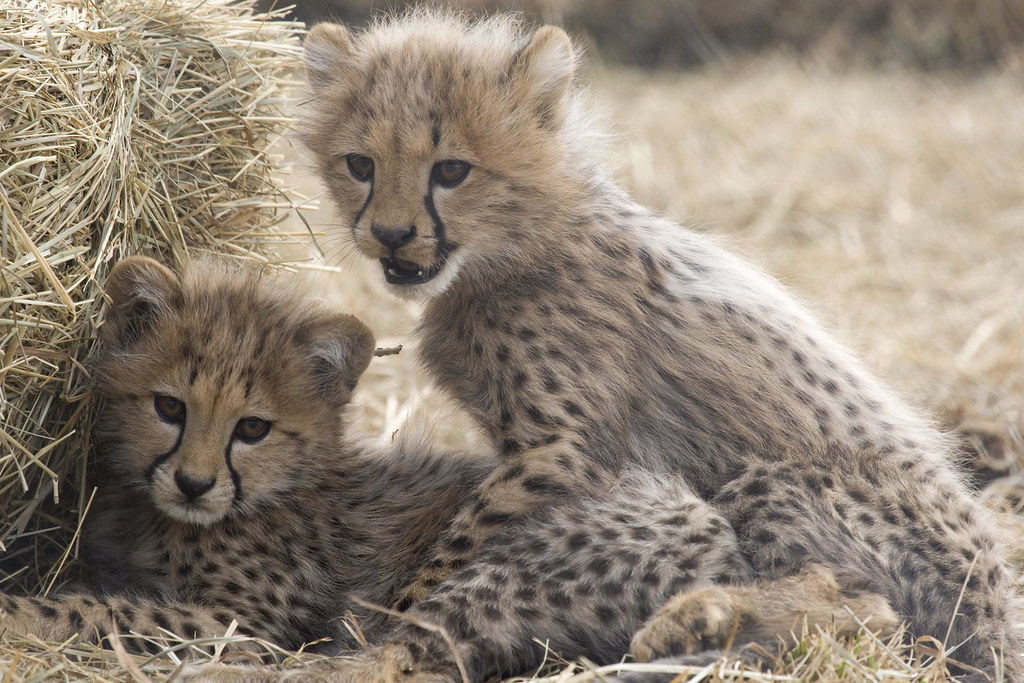#Zoo National
Text
The population of giant pandas in the wild has nearly doubled as China steps up its conservation efforts.
China’s National Forestry and Grassland Administration said on Jan 25 there are now around 1,900 pandas in the wild from some 1,100 in the 1980s.
This has been due to China’s efforts to protect the species, considered a national treasure, said Mr Zhang Yue, an official with the administration.
The Giant Panda National Park was established in October 2021, covering a total area of over 22,000 sq km and providing a home to around 72 per cent of the wild giant panda population.
Protected areas for giant pandas have grown from 1.39 million ha to 2.58 million ha since 2012.
The International Union for Conservation of Nature has adjusted the status of giant pandas from “endangered” to “vulnerable”.
“This indicates that China’s giant panda conservation efforts have been recognised by the international wildlife conservation community,” Mr Zhang said.
The global captive population of giant pandas, meanwhile, has now reached 728, with 46 pandas successfully bred in captivity in 2023.
The genetic diversity of captive giant pandas has also improved. The current captive population of giant pandas can maintain 90 per cent genetic diversity for up to 200 years.
As for giant pandas living abroad, Mr Zhang said China has organised field inspections and assessments of 23 overseas cooperation institutions in 19 countries since 2023.
“The cooperation institutions generally meet the requirements in terms of venue construction, feeding and nursing, and disease prevention and control measures,” Mr Zhang said, adding that pandas living abroad are generally “in good health”.
He said China will further improve the international cooperation management mechanism for giant pandas, carry out regular daily health monitoring and field inspection and assessment, and continue to strengthen cooperation with international partners for the protection of endangered species and biodiversity.
-via The Straits Times, January 25, 2024
#panda#panda bear#pandas#china#endangered species#conservation#conservation news#conservation efforts#conservation practices#ecology#wildlife conservation#zoo animals#zoology#wildlife#wild animals#national park#giant panda national park#icun#good news#hope#hopepunk
991 notes
·
View notes
Text
The Smithsonian has made over 4,000,000 images in its archive open source.
An example:

Fishing Cat, Smithsonian's National Zoo and Conservation Biology Institute. Photo by Mehgan Murphy.
6K notes
·
View notes
Text
753 notes
·
View notes
Text
For National Zookeeper Week, it would be interesting to theoretically message or email a local or frequently visited zoo and request as a regular patron that keepers be compensated appropriately for the work they do.
Politely, of course, since those the people monitoring public facing accounts are just the messenger.
Kind of important for people who take care of highly endangered animals to be able to afford rent and food, after all, without having to work multiple jobs.
Might have an interesting impact.
Theoretically.
#national zookeeper week#zoos#living wage#compensation#pay people what they’re worth#sanctuaries count too!#any zoological care or exhibition facility
450 notes
·
View notes
Note
I think I found the perfect animal for Peppino if you're looking for suggestions? I know most people would make him something like a boar or a member of suidae, BUT i think he's probably an herbivore. Those fellows can and will mess you up. They have nothing to lose and fight with their all. Why not make him a rejected petting zoo ram? He looks soft and sweet but he Will try to maim you if he's upset enough. Anyone who works with a ram can tell you they can be a bastard. Alternatively he could be a random species of goat. They are ornery as a rule. Some species can even be fairly exotic! Have you seen a markhor's horns!?! Prime wreck your shit material.
you know what, i can agree with this take purely based on Peppino's tendency to ram (heh) into things


#thank you this was a great suggestion and very fun to draw#herbivore nation rise up#zoo au#pizza tower zoo au#peppino spaghetti#pizza tower#ask response#art tag
195 notes
·
View notes
Text

please picture me in the trees
taylor swift at the sydney zoo february 21, 2024
#taylor nation#taylor swift#taylorswift#taylurking#taylornation#the tortured poets department#ttpd#eras tour#ts11#the eras tour#sydney zoo#taylor swift zoo#taylor swift australia
47 notes
·
View notes
Photo
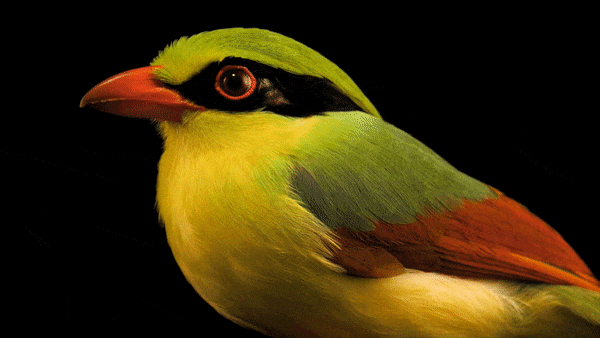
Jolie the Indochinese green magpie is one lucky bird.
Jolie, who was rescued from a wildlife smuggler in 2017, now lives at the Los Angeles Zoo.
PHOTOGRAPH AND VIDEO BY JOEL SARTORE, NATIONAL GEOGRAPHIC, PHOTO ARK
#joel sartore#photographer#videographer#video#national geographic#indochinese green magpie#magpie#bird photographer#nature#los angeles zoo#animal
74 notes
·
View notes
Text
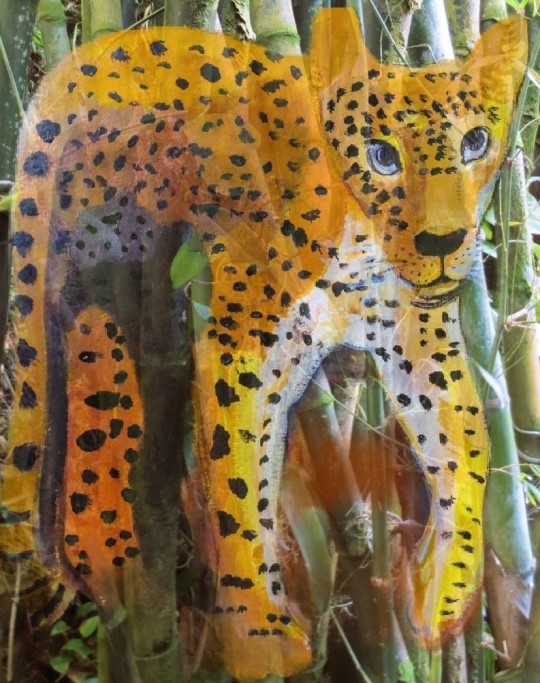
Untamed in Zanzibar, Tanzania
#zanzibar#tanzania#cheetah#cheetah print#cheetah girls#vacation#painting#national parks#africa#safari#kenya#nambia#south africa#digital collage#composite image#adobe creative cloud#nature photography#nature#bamboo#zoo#stone town#globe trekker#yourshotphotographer#national geographic#intothewild#survivorcbs#naturelovers#milesandpoints#paintandsip
89 notes
·
View notes
Text

PALS, IT'S FRIDAY. Y'ALL DID IT! 🐻
What a better way to celebrate than welcoming this adorable orphaned bear cub who just arrived at the Woodland Park Zoo! You can find out much more here or here.
Congrats to the Earl of Avoirdupois, the fattest of them all, Mr. 747 for winning Fat Bear Week. We're real proud of ya, boy. Sleep tight you enormous king.
Make your weekend incredible. Thanks for hanging out with us every week. It's y'all who make Friday Bear so special.
- - - - - - - -
Photo from Seattle's Woodland Park Zoo.
#fat bear week#fatbearweek#bears#grizzly#grizzly bears#katmai national park#katmai#alaska#alaska brown bear#friday#friday bear#outdoors#wildlife#cute#animals#seattle#seattle zoo#woodland park zoo#bear cub#baby bear#cub
417 notes
·
View notes
Photo

Panda at Panda Palooza
62 notes
·
View notes
Text
598 notes
·
View notes
Text
Happy National Zookeeper Week!
I’ll admit, I’m feeling a little spicy about it this year (well, every year) because zoos use the celebration for lots of positive facility PR, yet staff don’t often get the support and respect that is claimed in those posts.
So I want to share this great article written by a zoo industry consulting group last year looking at the reality of what happens when a workforce ends up conflicted between their passion (zoos and animals) and pragmatism (paying rent, existing in a capitalist society). They assessed AZA compensation rates by region against things such as a living wage and rental rates in the area. (All text formatting within quotes, such as bold and italics, is original to the article text.)
I cannot give the Canopy Group enough support for the way they framed this research:
“By observing the economics of keeper compensation, it’s no secret that keepers land on the lower end of the wage spectrum. Like all other wages and salaries, the market value of keeper compensation is driven by several economic factors – including the size of the labor pool, the rigor and danger of the work, the technical ability required, and the educational requirements. However, there is one factor that artificially lowers the market value of keeper compensation more than any other: passion.
In this article, we’ll take a look at why passion lowers the market value of animal care worker wages. More importantly, we’ll consider many factors that have emerged in recent years that are making people reevaluate the value of following their passion – a trend contributing to The Great Resignation, especially as it applies to zoos, aquariums, and similar organizations. (…)
The argument here is passion versus pragmatism: the unknown versus the sure thing. It is a decision all zookeepers and animal care technicians have made. Working with animals is immensely rewarding, but this passion is also very popular. This, historically, has meant that the keeper candidate pool is very large. Therefore, if the wage is livable and working conditions are reasonable, the pool should remain large. In a very real sense, a passion for animals drives down the market value of keeper compensation. Anyone who has been through an Economics 101 course will recognize this as a fundamental market principle: supply vs. demand.
However, many zoos and aquariums are having a more difficult time filling positions than normal and have started to see higher turnover rates in recent years. This begs the question – is the current keeper wage too low?”
Their findings?
Here’s their graph of “the median wage of keepers from organizations in different AZA-defined regions” from an AZA survey done in 2021. (Median is the type of average that looks at the middle of a data set’s range).
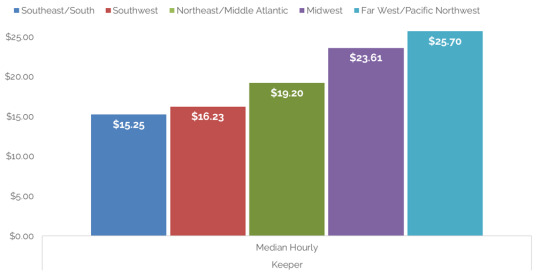
The median wage for AZA keepers in the South/Southeast was just over $15/hr at the low end, and the median wage for AZA keepers in the Far West / PNW was a little under $26/hr. That’s pretty dang low everywhere, especially when you factor in the increased cost of living in places like the West Coast. Also consider that looking at the median wage doesn’t mean this reflects just entry-level compensation - this data indicates the the compensation middle for all keeper positions, including people who have built their careers as keepers in those places long-term.
Then, they compared those wages to the “living wage” in each region - which they defined as “a calculation of what it takes to live in a particular area, without any other income. A living wage calculation takes into consideration how many earners are in a household, how many children are being supported, etc. The living wage includes the costs of all the basic items a household needs to be self-sufficient.”
“If you receive a wage for a job that is below the living wage, then you are essentially taking a negative net income. This is unsustainable for the long term, and essentially defines where wages start to exploit passion.”
Here’s a figure they provided using the MIT Living Wage Calculator showing the average living wage for each of the AZA regions. The chart on the left shows the living wage for a single person with no kids; the second, for two parents with two incomes and one child to support.
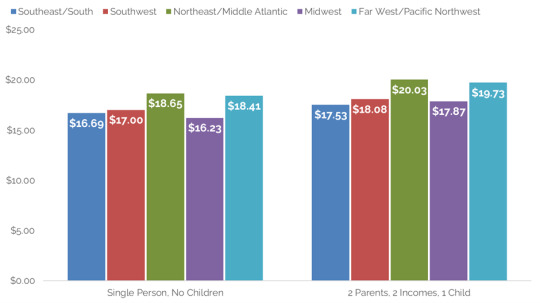
“By comparing the two graphs [to the earlier graph of the AZA median compensation rates], we find that median wages in the Southeast/South and Southwest regions are lower than the living wage for each household configuration in those regions. In other words, if you are a single person household or part of a two-income household raising 1 child in the South, a starting keeper salary will likely leave you with a negative net income. While many people work at this level, it increases the risk of accumulating debt, lowers a person’s ability to afford a home, set a much later retirement age, and can lead to many other negative, long-term effects.”
Big yikes, right?
Next, they looked at living wage vs. compensation for single parents.

“The single-parent living wage exceeds the average keeper wage in all AZA regions. In fact, the living wage required as a single parent is double the average AZA keeper wage in some regions.”
And then they did housing, specifically, being able to purchase a home.
“In many places, even a two-income household at an average keeper salary would not purchase a mid-level home. This means that keepers have to wait far longer than their peers to purchase a home. While paying rent in the meantime, this rent will account for a larger portion of their income than their peers. All in, these effects can set hopeful homeowners back years or decades.”
Canopy’s conclusion was something anyone involved in the field knew was coming.
“Companies like Chipotle, McDonalds, Best Buy, FedEx, Home Depot, Publix, and Walmart are all offering similar starting wages near starting keeper wages – plus many fringe benefits (like tuition reimbursement) and ample advancement opportunities. Many potential keepers in younger generations are putting their passion on the shelf so they can meet basic standard-of-living concerns.
To attract and retain quality candidates, an organization must consider the journey each new employee would have to make over their career. If the journey is fraught with massive debt, decreased disposable income, and limited career opportunities, then you are limiting your potential candidate pool to the small group of people who have decided that following their passion is worth significant lifelong financial hardship. There are many potential candidates out there willing to sacrifice and arm and leg for animals and conservation, but they wouldn’t dare jeopardize the financial future of their dependents and families.”
This is something I’ve heard about for years, and seen first hand. The low average wage at zoological facilities has been damaging their ability to hire and retain skilled staff for as long as I’ve been involved in the industry. I know so many zookeepers who still have roommates into their 30’s, or work multiple jobs, just to be able to make ends meet.
There’s a mythology about zookeeping jobs, a narrative that seeps into the field and actively exploits people’s passion for the job: it tells people that they’re so lucky to be able to work with these rare and cool animals; that they’re greedy and ungrateful when they ask for more compensation because they’re privileged to get to have the job at all. It says that most people would give anything to have these opportunities, so current zookeepers are interchangable and easily replaceable. Ask for too much? Push for a living wage? There’s always someone willing to take your spot. Not all facilities perpetuate this mentality - some places do treat their staff well without intentionally manipulating them to stay them in unsustainable jobs, and there can be legitimate financial reasons that limit staff compensation (mostly at smaller facilities, afaik) - but it’s a reality in the field.
For a long time, this type of mentality towards staff was sustainable. There really were always more people wanting to work in the field. But now, after three years of pandemic stressors and inflation, it’s starting to be a problem. A lot of staff left during the last few years, and facilities are having a really hard time hiring people and retaining them for any duration. I think a large part of that is low compensation rates. People are prioritizing long-term financial stability and recognizing when their passion is being exploited.
When I first started on tumblr back in 2011, there was a whole group of us within the United States who were baby zookeepers or volunteering as industry hopefuls. We all became friends, and I’ve stayed in touch with, or at least aware of, most of them as their careers progressed. Of the 10-15 or so people in that cohort? I can think of three who are still employed in the zoo industry. Everyone else has moved on into other fields - often with great grief over the loss - because of the extreme emotional labor, the physical exhaustion, and the lack of appropriate compensation.
But I guess that annual pizza party, being featured on social media, and maybe getting additional snacks all week makes up for it all?
#national zookeeper week#zoo industry#living wage#compensation#please support your local zookeeper#AZA accreditation#AZA zoos#zoos
552 notes
·
View notes
Text
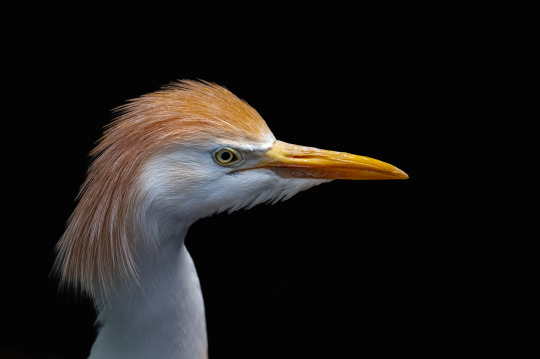
Cattle Egret, also known as cow cranes, cow herons, cow birds, elephant birds, rhinoceros egrets, and hippopotamus egrets, depending on what region they happen to occupy. They have a tendency to follow larger animals as a means of stirring up insects and such for a quick and easy meal. This symbiotic relationship with larger herd animals has allowed it to expand with human populations around the world, making it one of the most prolific avian species.
.
Photographed at the National Aviary
#cattle egret#birds#birblr#photography#photographers on tumblr#national aviary#animals#animal photography#zoo portraits
80 notes
·
View notes
Video
National Zoo's Cheetah Cubs Go Outside for the First Time by Smithsonian's National Zoo
Via Flickr:
#Species: jubatus#Genus: Acinonyx#Family: Felidae#Order: Carnivora#Class: Mammalia#Phylum: Chordata#Kingdom: Animalia#Cubs#SCBI#CRC#Front Royal#VA#USA#Smithsonian Conservation Biology Institute#National Zoo#cheetah cubs#cheetah#Zazi#Amani#cross-foster#flickr
15 notes
·
View notes
Text

Pearlescent Pair
This portrait of a pair of purple glossy starlings (Lamprotornis purpureus) at the Kansas City Zoo in Missouri.
Photograph by Joel Sartore
#joel sartore#photographer#purple glossy starlings#starlings#bird photography#lamprotornis purpureus#kansas city zoo#animal#missouri#nature#national geographic
46 notes
·
View notes
